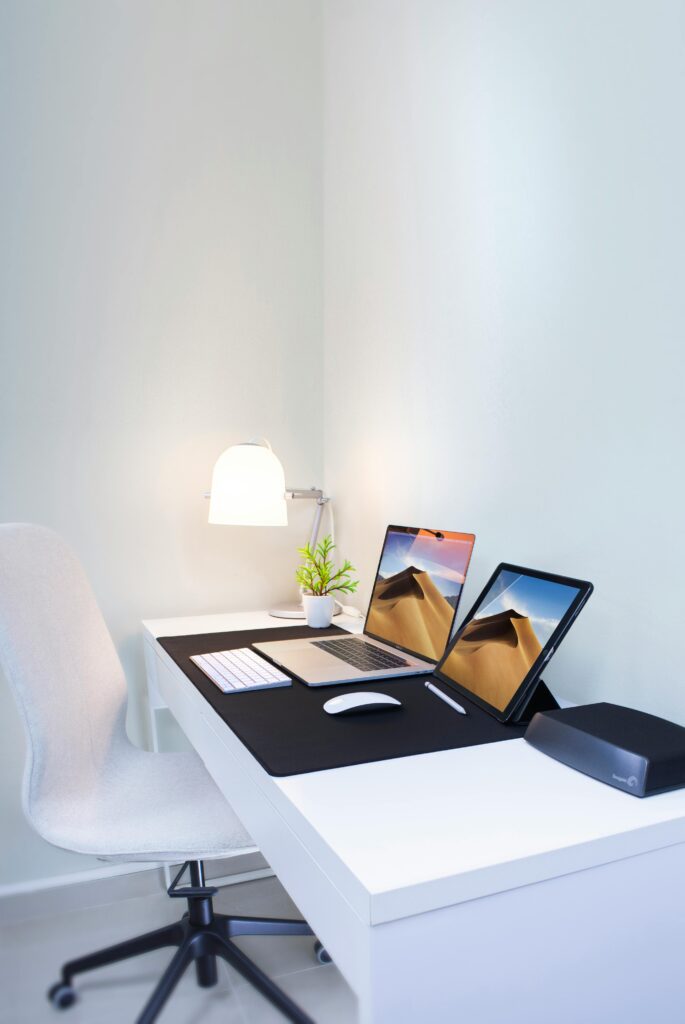How to Stay Focused in a World Full of Distractions: Practical Strategies for the Workday
In a time where attention is one of the most valuable — and most fragile — resources, staying focused during the workday can feel increasingly difficult. Between incoming emails, chat notifications, meetings, multitasking, and digital noise, the average professional is interrupted or switches tasks dozens of times per hour.

This environment makes it challenging to maintain deep concentration for longer periods, which in turn reduces the quality and speed of work. But focus isn’t just a personal trait or a matter of willpower — it’s a skill that can be developed and supported through structure, tools, and small behavioral adjustments.
In this article, you’ll find seven practical strategies to help protect your focus, increase productivity, and bring more calm into your workday — whether you work in an office, remotely, or hybrid.
- Identify and Minimize External Distractions
- Use Time Blocks and Task Batching
- Set Clear Priorities at the Start of Each Day
- Design a Workspace That Supports Focus
- Manage Digital Distractions Intentionally
- Schedule Breaks to Maintain Mental Clarity
- Conclusion: Use Simple Rituals to Start and End Focus Sessions
Identify and Minimize External Distractions
The first step to improving focus is identifying what currently gets in the way. Common external distractions include smartphone pings, chat notifications, noisy environments, open-plan offices, or colleagues dropping by with quick questions. These interruptions often seem small — but they add up and break the rhythm of concentrated work.
To reduce them effectively:
– Silence non-urgent notifications on phone and desktop
– Communicate your focus times to your team (e.g., via calendar blocks or status messages)
– Use tools like “Do Not Disturb,” email batching, or noise-cancelling headphones
It’s also helpful to observe which times of day tend to be quieter or more interruption-free — and reserve those windows for tasks that require deeper thinking.
Use Time Blocks and Task Batching
Multitasking may feel productive, but studies consistently show it leads to lower efficiency and higher error rates. One of the most effective ways to work with your brain — instead of against it — is by batching similar tasks and assigning specific time blocks to them.
For example:
– Check emails only two or three times per day instead of constantly
– Schedule administrative tasks together
– Reserve uninterrupted blocks (60–90 minutes) for creative or analytical work
Using your calendar proactively or applying time management techniques like the Pomodoro method (25 minutes work + 5 minutes break) can help structure your day and reduce the cognitive cost of switching between unrelated tasks.

Set Clear Priorities at the Start of Each Day
When you begin the day without direction, it’s easy to get pulled into reactive tasks — answering emails, attending ad-hoc meetings, or handling whatever pops up next. While some flexibility is important, setting clear priorities helps you stay focused on what truly matters.
Try this each morning:
- Write down the 1–3 most important tasks you want to complete
- Define what a “successful” workday would look like
- Revisit your list during the day to stay aligned — especially after interruptions
Prioritization not only improves focus, but also reduces the stress that comes from trying to do everything at once.
Design a Workspace That Supports Focus

Your physical and digital workspace plays a bigger role in your attention than you might think. A cluttered desk, noisy background, or a screen filled with unrelated tabs can all contribute to mental overload — even if you’re not consciously aware of it.
Some helpful adjustments include:
– Keeping your desk tidy and minimizing visual distractions
– Using headphones or background noise apps to block out unwanted sounds
– Closing unused browser tabs and separating work contexts (e.g., using different desktops or profiles for different types of work)
In remote settings, creating even a small visual or physical boundary between “work” and “life” can make it easier to mentally switch into focus mode.
Manage Digital Distractions Intentionally
Most digital tools — email, chat, apps — are designed to demand attention. While they’re essential to modern work, they need to be used with clear boundaries in order to protect your focus.
Strategies include:
– Checking email and messaging apps only at fixed times during the day
– Turning off preview pop-ups, badge icons, or unnecessary app notifications
– Using browser extensions like “StayFocusd” or “LeechBlock” to block distracting sites temporarily
Even just moving your phone out of arm’s reach can reduce temptation. The goal isn’t to cut yourself off — it’s to choose when to engage, rather than reacting constantly.
Schedule Breaks to Maintain Mental Clarity
Working without pauses may seem productive, but in reality, it leads to reduced concentration and faster mental fatigue. Regular, intentional breaks help the brain recover and support sustained focus throughout the day.
Instead of pushing through for hours, structure your work in cycles — for example, 90 minutes of focused work followed by a 10-minute break. Use this time to stand up, stretch, get some fresh air, or simply step away from the screen.
Avoid filling every break with your phone or social media. True recovery happens when the brain is not actively processing new input. Even short moments of stillness can significantly improve clarity and performance for the rest of the day.

Use Simple Rituals to Start and End Focus Sessions
Rituals are powerful tools for training the brain. By repeating certain actions before and after focused work, you create signals that help you mentally switch modes more easily.
Examples of start rituals:
– Writing your first task on a sticky note
– Turning on a specific playlist or lighting a desk lamp
– Closing all irrelevant tabs and opening only the tools you need
Examples of end rituals:
– Checking off completed tasks
– Writing a short note about where to continue next
– Physically clearing your workspace
These small actions reduce friction, build consistency, and make it easier to enter — and leave — a focused state.
Conclusion: Use Simple Rituals to Start and End Focus Sessions
Distraction is a part of modern work life — but it doesn’t have to control your day. With small, intentional adjustments, you can reclaim your attention and create more space for meaningful, satisfying work.
Focus isn’t about perfection. It’s about setting boundaries, managing energy, and building habits that support your goals. Whether you apply one of these strategies or all seven, each step brings you closer to a calmer, more productive workflow — one focused hour at a time.